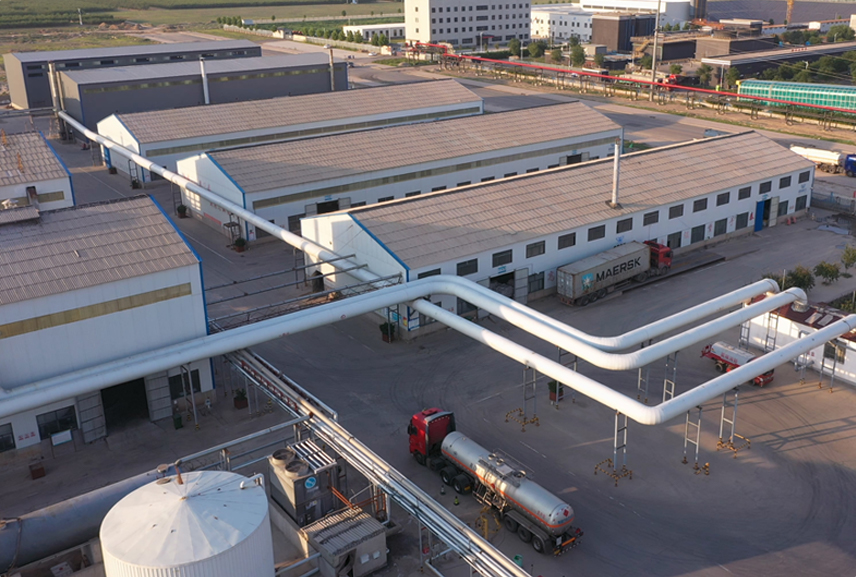Hydroxypropyl starch ether (HPS) is a fine white powder obtained fromnatural plant materials by modified, highly etherified reaction, andthen spray drying without plasticizer. lt is completely different from or-dinarv starch or modified starch.
Product Details
Hydroxypropyl starch ether (HPS) is a fine white powder obtained fromnatural plant materials by modified, highly etherified reaction, andthen spray drying without plasticizer. lt is completely different from or-dinarv starch or modified starch.
Starch ether is etherified starch, which is a starch substituted ether generated by the reaction of hydroxyl group in starch molecule with reactive substance. In the mortar industry with rapid thickening, improve the anti sagging ability of the material, prolong the operation time, improve water retention and other functions, and has a good compatibility with other materials
Dosage
0.01~0.05% of mortar materials., we suggest test in lab before the final application for the best dosage.
Key Properties
- Improve sagging resistance/ anti-sagging properties
- Optimize work-ability
Packaging and Storage
A. Standard Packing: In 25kg bags out HDPE bags inner with LDPE bags
B. Big Bag or other special packages are possible on request.
Store it in a cool, dry place below 30°C and protected against humidity and pressing, since the goods is thermoplastic, storage time should not exceed six months.
Safety Notes
The above data is in accordance with our knowledge, but don't absolve the clients carefully checking it all immediately on receipt. To avoid the different formulation and different raw materials, please do more testing before using it. We reserve the right to alter our product and without informing in advance.
Click here to get a sample and we'll work out a solution tailored to your needs.
Specification
| ITEM | RANGE |
| Appearance | White to whitish powder |
| Hydroxypropyl | 13.0-19.0 |
| Solubility | Soluble in cold water |
| Fineness | 95% (80M) |
| Viscosity | 50-3000mPa.s |
| Loss on drying | ≤10% |
| Moisture | ≤10% |
| Recommended Dosage | 0.3-0.5%o |
| Applications | Gypsum-based and cement-based mortar and wallputty |
Product Advantage
●Excellent workability
●High water retention
●Long opentime
Hydroxypropyl starch ether has a wide range of applications, mainly in the following fields:
1. Construction field: It is widely used in cement mortar, building coatings, aerated concrete, etc., and can help improve their viscosity, making these materials easier to construct and helping to improve construction efficiency.
2. Components of emulsion coatings:Hydroxypropyl starch ether from Haoshuo serves several important functions. It prevents the gelation of pigments, aids in pigment dispersion, stabilizes the latex, and can increase the viscosity of the components.
4. In the field of personal care: Hydroxypropyl starch ether is often used in soap, cosmetics, skincare products, shampoo, hair conditioner and other products to increase their viscosity, thereby achieving thickening, emulsification, moisturizing and other effects.
Packaging and Shipping
Packaging and storage: 25 kg/bag
Note: The product is packaged in polypropylene woven bags, each with a net weight of 25kg. When storing, place in a ventilated and dry place indoors, pay attention to moisture. Pay attention to rain and sun protection during transportation.
Quantity/20GP: 12 tons with pallets, 14 tons without pallets.
Quantity/40HQ: 24 tons with pallets, 28 tons without pallets.
FAQ
Regarding the relationship between viscosity and temperature in HPMC (HPMC viscosity), what should be noted in practical applications?
What are the differences between HPMC and MC?
What are the formulations for interior and exterior wall putty powder?
What is the application of HPMC in putty powder, and what causes the formation of bubbles in putty powder?

Tags
Related Products

Get in Touch
Interested in how our HPMC can enhance your personal care formulations? Contact us to request a free sample and experience the superior quality of our cellulose ether products.
Related News and Blogs
23
Aug., 2024
Hydroxypropyl Methylcellulose In the Construction Building
Hydroxypropyl MethylCellulose helps to increase the dispersion of cement-sand, greatly improve the plasticity of mortar and water-holding capacity, prevent cracks and enhance the strength of cement.
23
Aug., 2024
What Is Hydroxypropyl Methylcellulose for Tile Adhesive?
HPMC is a modified cellulose ether, where hydroxypropyl and methyl groups are attached to the cellulose backbone. The degree of substitution of these groups can vary, influencing the polymer's properties.
26
Jul., 2024
16
Jul., 2024
VAE Redispersible Powders (RDPs) in Building & Construction Applications
Dry mixing VAE-RDPs with other powders such as cement, sand, or light aggregate at a field site or manufacturing location ensures consistency and reliable performance.

Get in Touch
Interested in how our HPMC can enhance your personal care formulations? Contact us to request a free sample and experience the superior quality of our cellulose ether products.